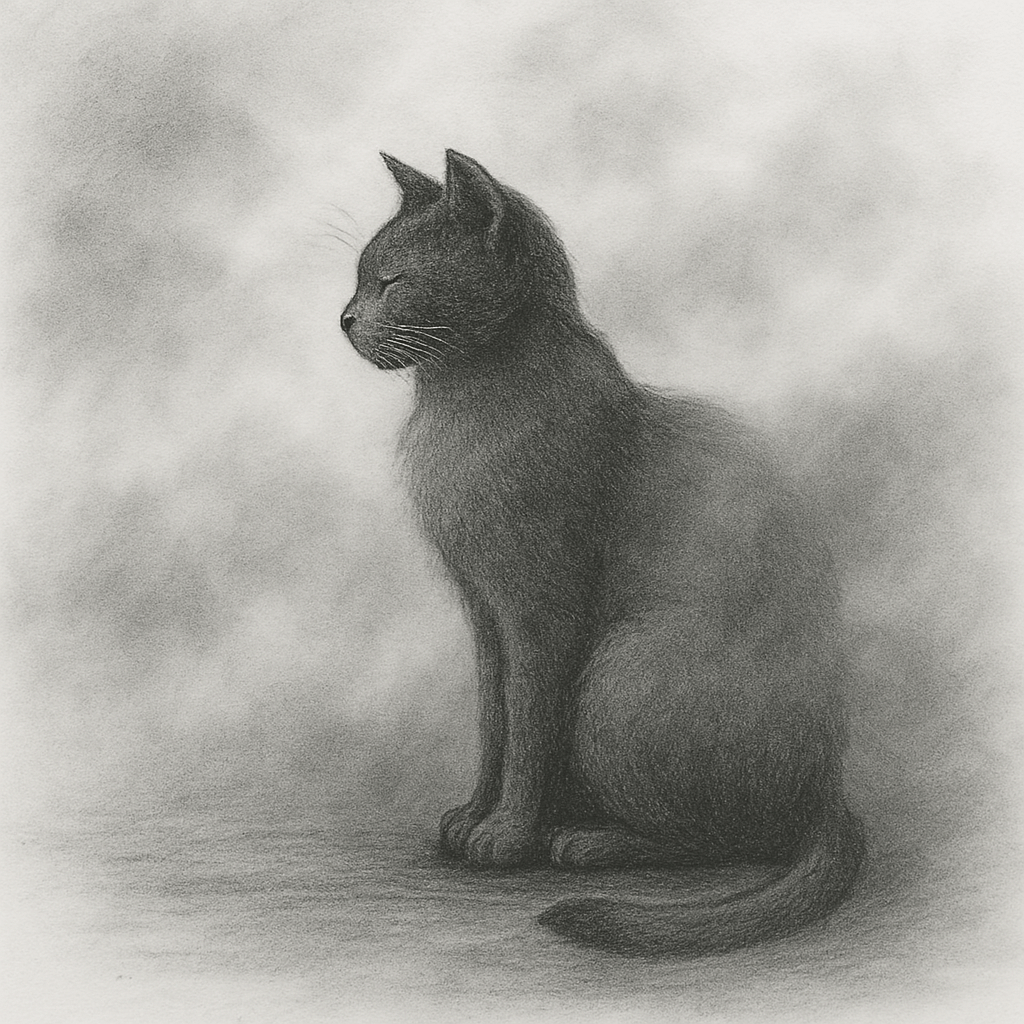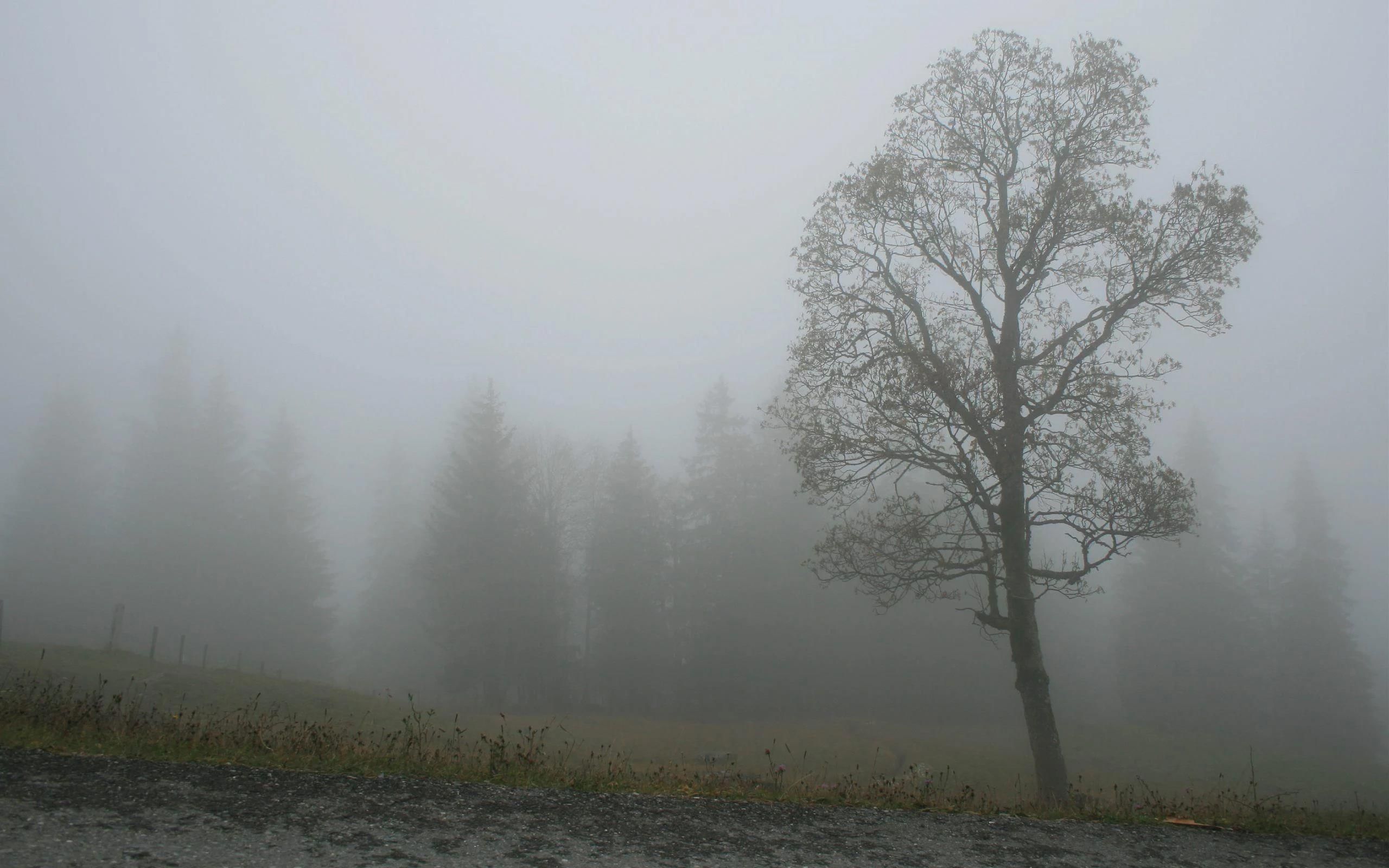Class 10 English Chapter 1 Question Answers - First Flight
Q1: What metaphor has the poet used in the poem "Fog"? Do you think it is appropriate?
Ans: In the poem Fog, Carl Sandburg compares the fog to a cat. This metaphor is unique because it likens a natural phenomenon to a living creature. The poet likely uses this comparison to highlight the fog’s silent and mysterious nature.
Like a cat, the fog moves quietly and unnoticed, yet its presence is clearly felt. The way the fog lingers over the city and harbour is similar to a cat sitting on its haunches, watching silently before moving on. This comparison makes the fog more vivid and relatable, helping the reader picture how it arrives, stays briefly, and then disappears without warning. The metaphor is appropriate because the fog, like a cat, appears suddenly, moves gracefully, and vanishes without a sound.
 FogQ2: How does Carl Sandburg use the metaphor of a cat to describe the fog in the poem? What does this comparison add to your understanding of the fog’s nature?
FogQ2: How does Carl Sandburg use the metaphor of a cat to describe the fog in the poem? What does this comparison add to your understanding of the fog’s nature?
Ans: Sandburg compares the fog to a cat to emphasize its silent, graceful, and mysterious movement. The fog arrives without a sound, much like a cat approaching on soft feet.
A cat observes before moving, just as the fog settles over the city and harbour, pausing briefly before drifting away. This metaphor makes the fog feel alive, as if it has its own personality and purpose. The comparison helps us understand that the fog is not forceful or disruptive, but rather gentle and watchful. Like a cat, the fog moves freely, stays briefly, and departs without a trace, making it a symbol of quiet transformation in nature.
Q3: How does Carl Sandburg describe the arrival, stay, and departure of fog through the image of a cat?
Ans: Sandburg presents a dual image—the fog becomes a cat, and the cat morphs back into the fog. The fog’s arrival is quiet and sudden, just like a cat that appears without warning.
Once the fog settles, it engulfs the surroundings, covering both the harbour and the city. It stays briefly, just as a cat pauses, sitting on its haunches, watching its surroundings before moving on. Finally, the fog drifts away, just as a cat never stays in one place for long. This imagery highlights the fog’s silent power, showing that it moves on its own terms, touching everything without being noticed, yet making a lasting impression.

Q4: What can the fog’s behaviour in the poem Fog teach us about handling uncertainties in life?
Ans: The fog in the poem teaches us to face uncertainties with patience and calmness. Just like fog comes and goes quietly, problems in life are temporary and will pass with time.
Instead of reacting with fear or frustration, we should observe, think, and adapt. The fog’s silent and brief stay reminds us that nothing lasts forever, and challenges should be met with a steady and thoughtful approach. Just as the fog moves without resistance, we should learn to accept life’s uncertainties rather than struggle against them. The poem encourages us to trust that difficult times will pass and clarity will return, just as the fog eventually lifts.
Q5: How does the setting of a harbour and city enhance the overall mood of the poem Fog?
Ans: The harbour and city setting creates a contrast between movement and stillness. Cities and harbours are usually lively and busy, but when the fog arrives, everything slows down and becomes quiet.
This contrast enhances the mysterious and peaceful mood of the poem. The fog’s presence over a normally active environment makes its silent and temporary nature stand out. It also adds a sense of reflection and stillness, making the reader pause and appreciate how nature interacts with daily life. The setting reinforces the idea that fog, like time, moves freely and changes the atmosphere, even if just for a short while.
Q6: How does the poem "Fog" reflect the idea that life’s moments are temporary and always changing?
Ans: The poem reflects life’s fleeting nature by showing that fog, like moments in life, appears, stays briefly, and then disappears. The fog arrives silently, covers everything, and then moves on, much like different phases in life. This reminds us that both joyful and difficult times will pass, urging us to appreciate each moment while it lasts. The way the fog quietly departs teaches that change is natural and does not always happen dramatically. Just as fog lifts to reveal clarity, life’s uncertainties will also fade, making way for new experiences. The poem encourages us to accept and embrace change instead of fearing it.
Q7: What might the "fog" symbolise in terms of emotions or thoughts? How does this symbolism help you understand the poem better?
Ans: The fog can symbolize unclear emotions, confusion, or moments of doubt. Just as fog obscures vision and makes it hard to see ahead, our thoughts can sometimes be clouded by uncertainty.
This symbolism helps us relate to the poem as a reflection of times when we feel lost or uncertain. However, like fog eventually clears, confusion and difficult emotions do not last forever. The poem teaches us to be patient, knowing that clarity will return. By understanding fog in this way, we learn to trust the process of change, allowing emotions to come and go without fear, just as the fog drifts in and out of sight.
Q8; How does the poet’s use of free verse in "Fog" contribute to the overall impact of the poem?
Ans: The free verse structure makes the poem feel natural and effortless, just like the movement of fog. Without a fixed rhyme or rhythm, the poem flows smoothly, mirroring how fog moves freely and unpredictably.
This lack of structure enhances the fog’s mysterious and peaceful nature. It makes the poem feel spontaneous and real, reinforcing the idea that fog, like life, does not follow a strict pattern. The short, simple lines also reflect the brief and subtle nature of the fog, making the poem’s message more direct and impactful. The poet’s choice of free verse allows the mood and imagery to take center stage, making the poem more reflective and thought-provoking.
Q9: How does the fog’s brief stay in the poem relate to mindfulness and living in the moment?
Ans: The fog’s short presence in the poem reflects the idea of mindfulness and appreciating the present. Just like fog comes and goes quickly, life’s moments are temporary, and we should cherish them while they last.
Mindfulness teaches us to focus on the present instead of worrying about the past or future. The fog’s quiet and gentle arrival reminds us to pause, observe, and appreciate our surroundings. The poem encourages us to slow down, be present, and find peace in life’s small, fleeting moments. It reminds us that life is constantly changing, so instead of fearing change, we should embrace it with a calm and accepting mindset, just as the fog does.
Q10: How does the imagery in the poem "Fog" enhance the reader’s experience and understanding of the fog’s nature?
Ans: The imagery in the poem makes the fog feel alive and real. Words like "little cat feet" and "silent haunches" create a clear picture of the fog moving softly, like a quiet cat.
This gentle and graceful imagery helps readers visualize the fog’s slow and mysterious movement. The image of the fog sitting and watching over the city and harbour adds a feeling of calm observation. Through strong visual descriptions, the poem brings the fog to life, making it easier for readers to connect with its peaceful and fleeting nature. The poet’s choice of simple yet powerful words helps to create a sense of mystery and wonder, making the fog seem like an observer rather than just a weather phenomenon.
|
61 videos|617 docs|69 tests
|
FAQs on Class 10 English Chapter 1 Question Answers - First Flight
| 1. What is the central theme of the poem "Fog"? |  |
| 2. How does the poet use imagery to depict fog in the poem? |  |
| 3. What literary devices are prominent in the poem "Fog"? |  |
| 4. What emotions does the poem "Fog" evoke in the reader? |  |
| 5. How does the structure of the poem "Fog" contribute to its meaning? |  |

















